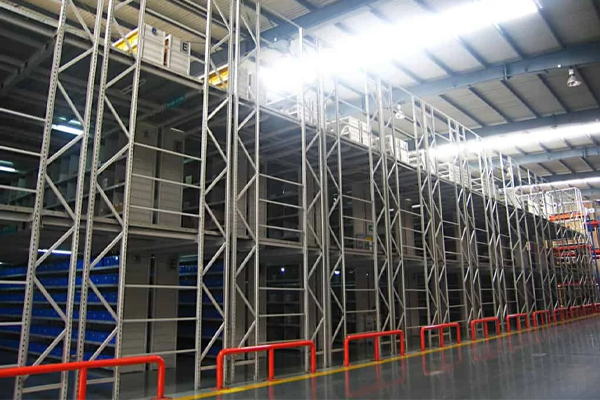When it comes to efficient warehouse storage, the choice between multi-tier racking systems (vertical/ mezzanine-based setups) and traditional single-level racks can make a big difference in cost, safety, and productivity. Traditional racking has long been the go-to solution for businesses with moderate inventory and plenty of horizontal space. It’s simple, reliable, and budget-friendly—ideal for small distributors, retail stores, and facilities that require easy accessibility. On the other hand, multi-tier systems maximize vertical height by creating multiple storage levels, essentially turning unused overhead space into productive inventory zones. This makes them perfect for urban warehouses, e-commerce hubs, spare parts storage, and businesses operating in high-rent zones where space optimization is a must.
The decision really depends on your business type and space constraints. If you have limited warehouse area but expanding product lines, multi-tier racking helps you scale vertically without relocating or investing in bigger premises. It improves order picking, organizes SKUs better, and ensures maximum cubic utilization. However, it requires higher initial investment and proper planning for safety and accessibility. In contrast, traditional racks remain cost-effective and versatile for businesses that prioritize straightforward shelving, easy installation, and frequent stock rotation. They are simpler to maintain but can quickly run out of capacity as inventory grows, leading to congestion and inefficiency. Ultimately, businesses aiming for long-term scalability, especially in logistics, manufacturing, or e-commerce, will find multi-tier systems more beneficial, while traditional racks remain a smart choice for small-to-medium setups with budget or space flexibility.
FAQs on Multi-Tier vs. Traditional Racking Systems
What is the main difference between multi-tier racking and traditional racking?
Multi-tier racking uses vertical space to create multiple levels of storage, while traditional racking is single-level and spreads inventory across floor space.
Which businesses benefit most from multi-tier racking systems?
E-commerce warehouses, spare parts suppliers, logistics hubs, and businesses with limited space but high inventory turnover gain the most from multi-tier systems.
Are multi-tier racks more expensive than traditional racks?
Yes, multi-tier racks require higher upfront investment due to structure, flooring, and safety measures. However, they save long-term costs by reducing the need for bigger warehouses.
Can traditional racking still work for growing businesses?
Yes, traditional racks are ideal for businesses with budget constraints, simpler operations, or warehouses with enough horizontal space. But they may need frequent upgrades as inventory grows.
What safety considerations come with multi-tier racking?
Multi-tier systems require proper load distribution, guardrails, stairways, and safety compliance to ensure smooth movement of people and products.
How do I decide which system is right for my warehouse?
Assess your available space, inventory size, growth plans, and budget. If long-term scalability is important, multi-tier is better; if cost and simplicity are priorities, traditional racks fit best.





















